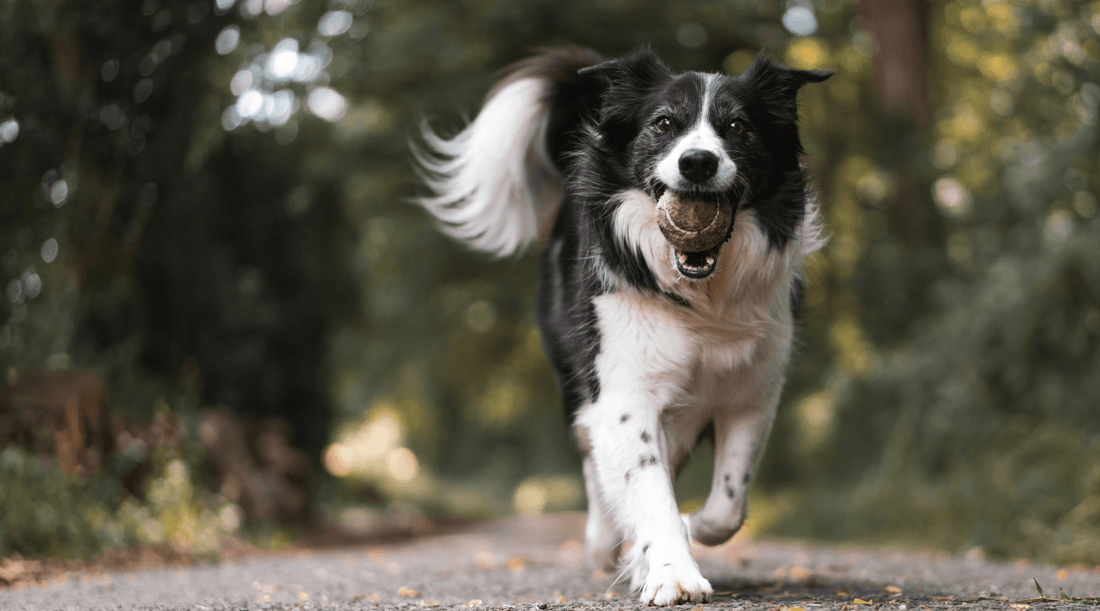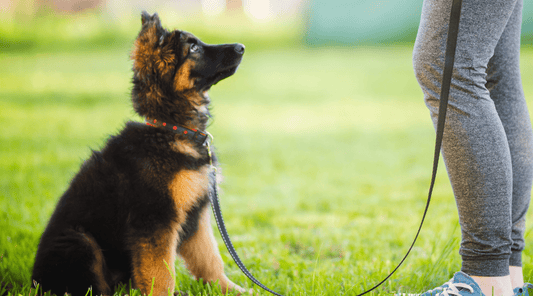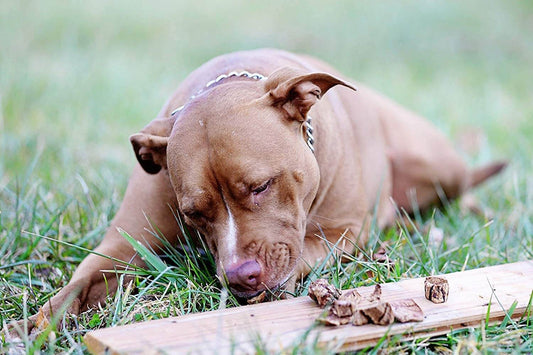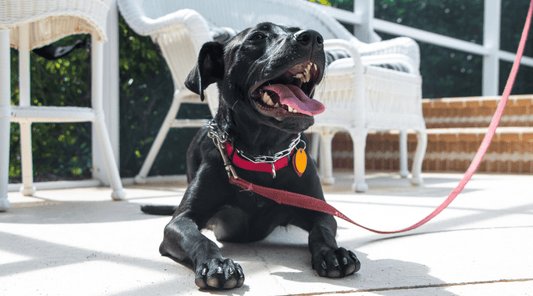
The Role of Exercise in Dog Mental Health
Dawn Miller Feb 11, 20254 Minute ReadJust like humans, a pup with declining dog mental health will struggle to manage stress, attend to self-care, and socialize with their packmates. So, it's up to us to support their mental vitality. Exercise is certainly an important way we can do that.
On Sunday, while walking around my neighborhood with three dogs on leash, I saw my neighbor Rory unsuccessfully trying to get her rottweiler mix, Onyx, to play fetch in the front yard. The red disc flew across the yard. Onyx didn't care.
"He usually loves to fetch," Rory exclaimed as I walked by. "Do you think he's sick?"
"You should ask your vet about that," I replied, as I approached. "But has anything changed in his life recently?"
Rory explained how she'd been so busy at work. They'd had a lot less time to play together.
It hit me that Onyx's lack of exercise could impact his motivation to play.
Signs of Poor Dog Mental Health
When dogs don't get enough exercise (both mental and physical), they change how they interact with their dog parents and the world. They may appear bored, disinterested, uncooperative, anxious, fearful, or aggressive.
Destructive chewing could result. They could ignore commands and sleep more than usual.
Can Dogs Get Bored?
Absolutely! That's one of the major signs of lack of exercise. A bored dog is a destructive dog. If your pup is chewing furniture, barking excessively, digging up the yard, or being an escape artist, boredom might be the culprit.
They need mental and physical exercise.
How Does Exercise Improve Mental Health in Dogs?
Physical exercise helps mental health in so many ways:
- Burning off excess energy, which can become nervous energy if left unused
- Releasing endorphins to boost the sense of wellbeing
- Improving circulation and nervous system health
- Balancing the circadian rhythm for better sleep
- Improving alertness and focus for more productive training sessions
Mental exercise (mental stimulation) has a similar effect, alleviating boredom, reducing anxiety, lessening destructive behaviors, and restoring motivation to be active and well.
There's a lot of overlap between mental and physical exercise. Encouraging your dog to follow their instinct to run, play, and learn new commands is both mentally and physically stimulating.
How Much Physical Exercise Does a Dog Need?
Some working dogs were bred to speed run long distances, such as Huskies, Terriers, Labs, Great Danes, and Border Collies. These breeds notoriously need a lot of exercise—an astounding 60-120 minutes a day.
Having a high-energy dog can certainly help me move more.
Moderate energy breeds include Golden Retrievers, Corgis, and Beagles. They need around 45 minutes to an hour.
Then, you have low-energy breeds like basset hounds, bulldogs, pugs and other flat-faced dogs. They need around 20-40 minutes a day.
I want to point out that these low-energy pups need exercise for dog mental health just as much as the others. They can simply make do with less of it.
For each of these breeds, it's ideal to divide exercise into 3 or more daily exercise routines you can both look forward to.
How Much Exercise Do Senior Dogs Need?
While younger seniors may need as much exercise as their middle-aged selves, older seniors may slow down to the point where they're pretty content with around 15-40 minutes daily. But it's important to push them to stay active to promote dog health and longevity.
If they have obvious signs of joint pain or breathing challenges, opt for low impact like slow walks, swimming in a safe area, and gentle games like "find it".
How Much Exercise Do Puppies Need?
Between 4-8 weeks, you can start short walks (5 mins working up to 15) twice a day. They'll naturally run around your home or yard in between, so the exercise part is taken care of.
But at around 8-12 months, dogs that spend time indoors or tied up may shift toward a more sedentary lifestyle. So starting at 8 months, teach them active games like fetch that you play with them for active aging in the coming years.
What Kinds of Exercise Do Dogs Need?
Exercise can include walks, runs, playing with other dogs in the yard or dog park, training sessions, backyard games, swimming, dog bone chewing sessions, and more.
In case you're wondering how a dog bone-chewing session qualifies as physical exercise, I want you to watch a dog chew a bone next time. I can only compare it to someone using a weight machine at the gym.
For a dog, the jaw muscles play a role similar to a human bicep. So, gnawing to strengthen the jaw is definitely physical exercise.
Chewing on a dog bone also qualifies as a mental exercise if it's filled with beef marrow. Dogs chew on bones, lick, and twist, trying to get the bone marrow out. Dog bones with bone marrow are like a dog puzzle toy, but without the microplastics.
This is a very stimulating activity that feeds a primal need to chew on hard objects.
Bone marrow is also incredibly nutritious (if it's from grass-fed cattle). It's rich in mental health-supporting nutrition like omega-3 fats and B12.
How Long Should Dogs Be Walked for?
You should intentionally walk your dog for 20-30 minutes a day at minimum. But as you can see, daily walks are not enough exercise for most breeds. You'll need to find other ways to get them active.
Tips to Get Your Dog Active
1. Establish a Routine
This gives both you and your dog something to look forward to. Getting more physical exercise becomes second nature when you prioritize it.
2. Play Interactive Games
Teach your dog interactive games. This makes exercise feel more stimulating for both of you.
I mean, a walk in the neighborhood is great. But playing fetch, tug-of-war, or hide & seek with your dog makes the event more memorable. You're both working more muscles and enjoying time together.
You'll look forward to it.
3. Use High Value Treats
Irresistible dog treats can serve several functions in your exercise routine.
First, you can use them for positive reinforcement training, teaching interactive games and commands that encourage more active collaboration.
I like beef lung bites. My terrier, Pixie, will do backflips for these single-ingredient, grass-fed beef organ meat treats.
You can also use treats in moderation to encourage a dog like Onyx to start moving again. After weeks of physical activity, Onyx would need a lot of encouragement.
4. Make Training Sessions a Regular Activity
Experts believe that dogs can learn and remember over 120 unique commands. So, don't be afraid to teach your dog new tricks and keep what they've learned fresh in their minds.
Schedule a short training session once or twice daily (if you can) to reinforce commands they already know. This is especially important for commands you don't use in everyday life.
Find new commands to teach your dog and work on that one new command at the beginning of each training session before reinforcing what they already know.
Want to learn new and fun commands to teach your dog? You'll find a ton of them when you sign up for this Free 7-Day Dog Training Challenge.
Available On:





